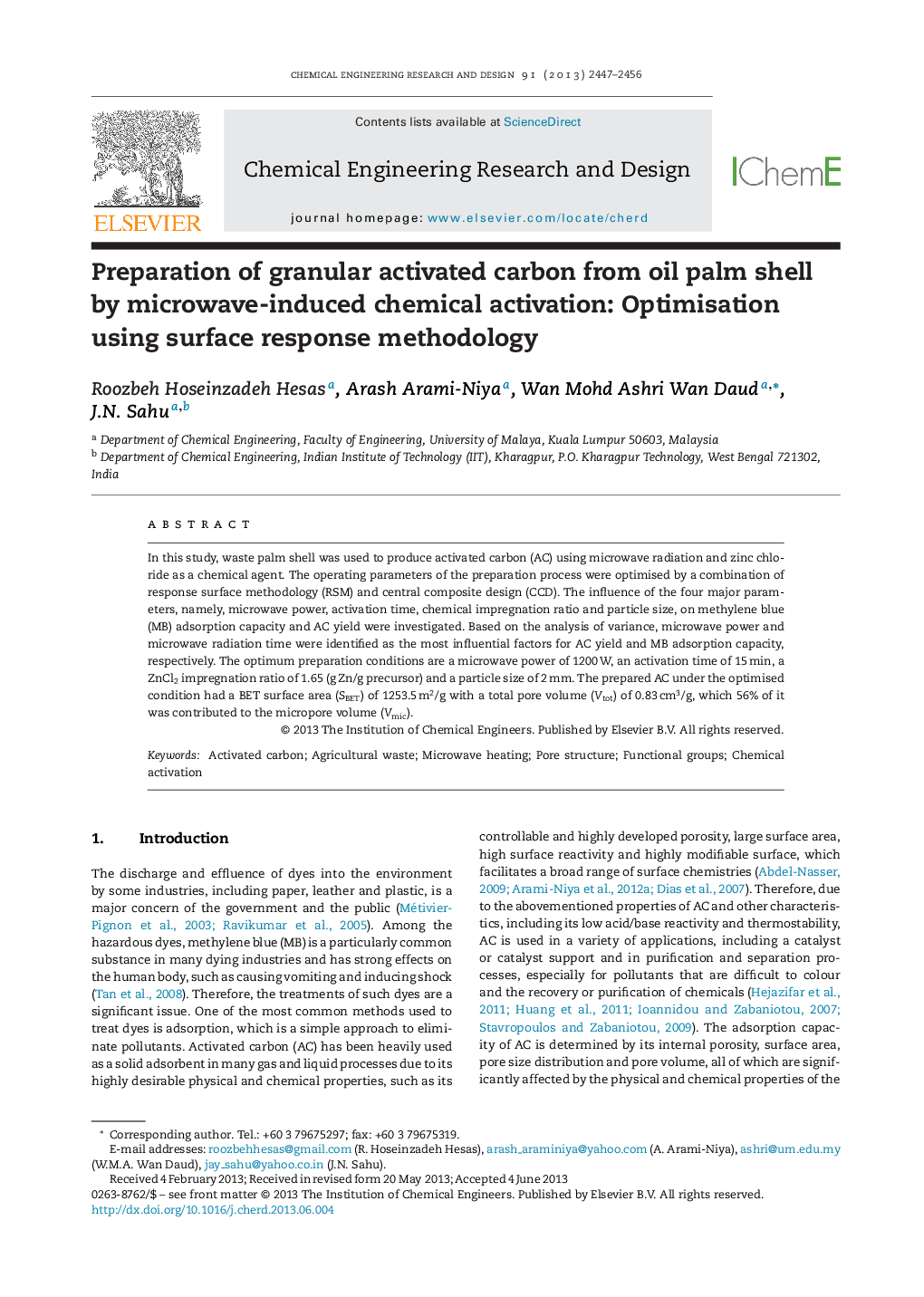| Article ID | Journal | Published Year | Pages | File Type |
|---|---|---|---|---|
| 620629 | Chemical Engineering Research and Design | 2013 | 10 Pages |
•Highlight the use of microwave radiation in production of activated carbon.•Evaluate the effects of chemical ratio, power level, radiation time and particle size.•Application of RSM to optimise the preparation condition of activated carbon.•High BET surface area and pore volume of 1253 m2/g and 0.83 cm3/g, respectively.
In this study, waste palm shell was used to produce activated carbon (AC) using microwave radiation and zinc chloride as a chemical agent. The operating parameters of the preparation process were optimised by a combination of response surface methodology (RSM) and central composite design (CCD). The influence of the four major parameters, namely, microwave power, activation time, chemical impregnation ratio and particle size, on methylene blue (MB) adsorption capacity and AC yield were investigated. Based on the analysis of variance, microwave power and microwave radiation time were identified as the most influential factors for AC yield and MB adsorption capacity, respectively. The optimum preparation conditions are a microwave power of 1200 W, an activation time of 15 min, a ZnCl2 impregnation ratio of 1.65 (g Zn/g precursor) and a particle size of 2 mm. The prepared AC under the optimised condition had a BET surface area (SBET) of 1253.5 m2/g with a total pore volume (Vtot) of 0.83 cm3/g, which 56% of it was contributed to the micropore volume (Vmic).
